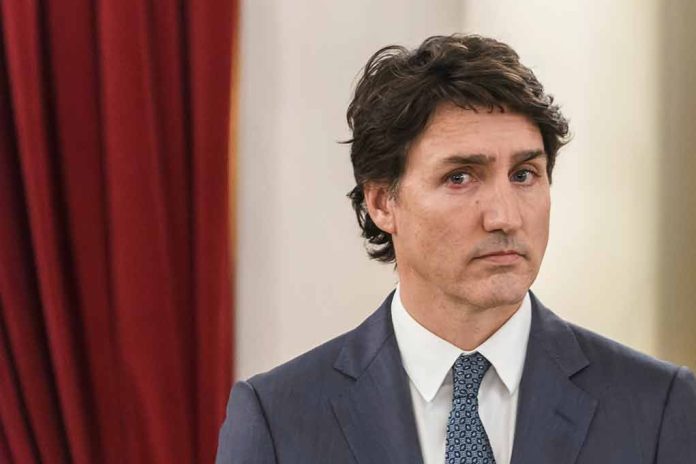
Canadian Prime Minister Justin Trudeau has successfully navigated political choppy waters once again.
At a Glance
- Canadian Prime Minister Justin Trudeau survived a no-confidence motion in parliament.
- The motion marked the first of several expected from the opposition Conservative Party.
- The motion failed as Conservative leader Pierre Poilievre couldn’t secure support from the NDP and Bloc Québécois.
- Trudeau’s government remains secure despite a significant drop in approval ratings.
Trudeau’s No-Confidence Saga
Canadian Prime Minister Justin Trudeau survived a no-confidence vote in the House of Commons with 211 votes against the motion and 120 in favor. This vote, crucial for Trudeau’s political future, was brought forward by the Conservative Party, which failed to secure the support of the New Democratic Party (NDP) and Bloc Québécois. Trudeau’s political resilience means he will continue leading the Liberal Party and the nation.
The no-confidence motion was brought by Opposition Leader Pierre Poilievre, who has been gaining ground in national polls. Poilievre, however, could not rally enough parliamentary support to unseat Trudeau, highlighting the fragmented nature of Canadian politics. The failure of the vote keeps Trudeau’s administration afloat, ensuring he can continue working on his policy agenda amidst political challenges.
🔵 TRUDEAU SET TO SURVIVE VOTE OF CONFIDENCE IN CANADIAN PARLIAMENT
Full Story → https://t.co/ybWTv3vaqT
(Reuters) – Canadian Prime Minister Justin Trudeau looks set to survive a vote of confidence on Wednesday after his main political rival appeared to fail to muster enough… pic.twitter.com/1ZzT59ybMF
— PiQ (@PiQSuite) September 25, 2024
Trudeau’s Political Maneuvering
Trudeau’s political maneuvering and alliances proved crucial. Conservative leader Poilievre couldn’t secure enough backing from the NDP and Bloc Québécois, key parties in the parliament. Trudeau has managed to stave off this immediate threat, but with Poilievre planning at least two more no-confidence votes, the prime minister may face additional challenges soon.
“I think it’s pretty lame that they’re going to put forward another non-confidence vote tomorrow,” said Liberal House leader Karina Gould.
Despite the recent success, Trudeau’s administration faces significant headwinds. His approval rating has plummeted from 63% to 28%, as Canadians express dissatisfaction over rising living costs and housing unaffordability. In addition, Trudeau’s minority government has been in power for nine years, an era marked by frequent political skirmishes.
Canada’s Trudeau faces confidence vote as support for prime minister hits new low
While Justin Trudeau appears likely to survive an upcoming confidence vote in the House of Commons, the deeply unpopular Canadian prime minister will not be out of the woods.
The official… pic.twitter.com/VmZgjx3MST— Sputnik (@SputnikInt) September 19, 2024
What Lies Ahead
As Trudeau regroups from the no-confidence vote, the political landscape in Canada remains precarious. Conservative leader Pierre Poilievre’s vision for Canada under a Conservative government is gaining traction, according to recent polls. This leaves Trudeau in a vulnerable position, albeit with enough parliamentary support, for now.
“The promise of Canada, ‘after nine years of Liberal government, is broken,'” he said during a Commons debate on Tuesday.
The Bloc Québécois issued an ultimatum, demanding the passage of two proposed laws by October 29 in exchange for continued support. Failure to comply could lead to more political instability. Trudeau’s focus will remain on navigating these demands while maintaining his grip on power and trying to boost his sinking approval ratings. Analysts suggest that while an election could happen sooner, it is unlikely before the spring of 2025.
Amidst the political turmoil, the Trudeau administration must balance parliamentary demands and the impending threat of additional no-confidence votes. The coming months will test the resilience of Trudeau’s leadership and the unity of his political alliances…
Sources
1. Canada PM Trudeau Survives No-confidence Vote But Remains On Thin Ice
2. Canada: PM Trudeau survives no-confidence vote, remains on thin ice









